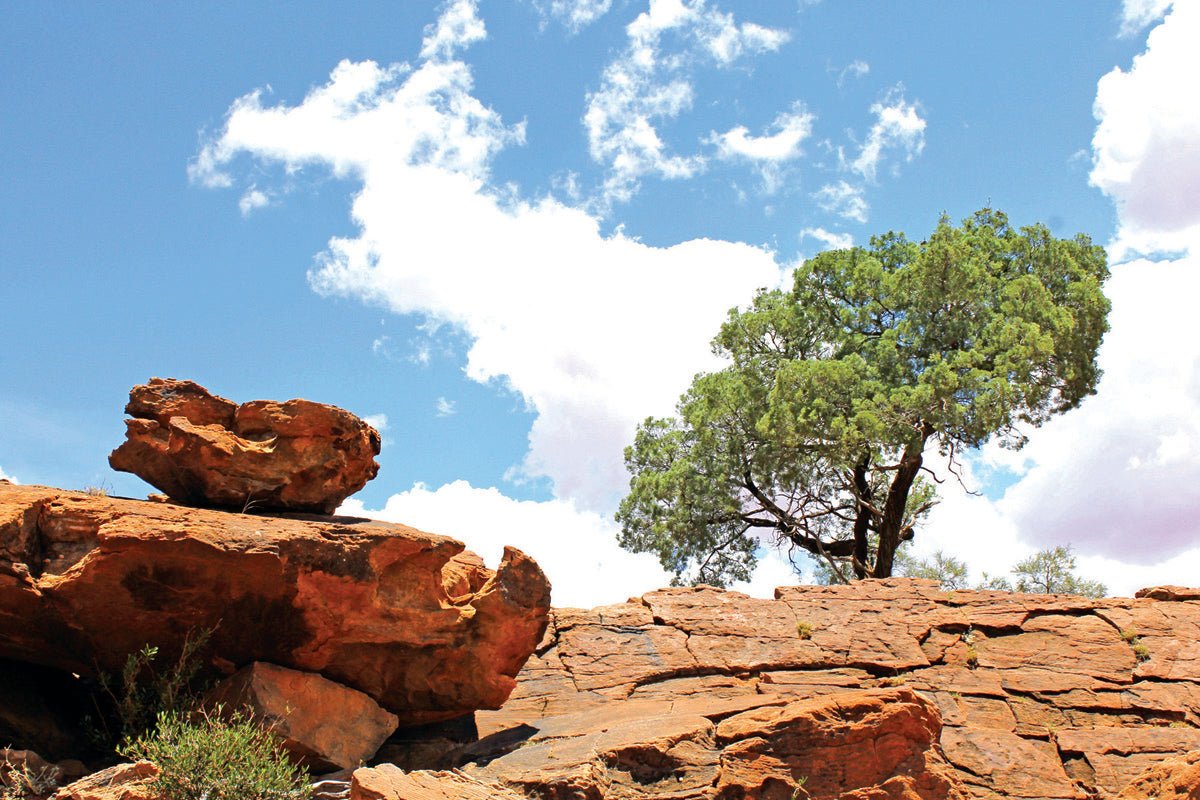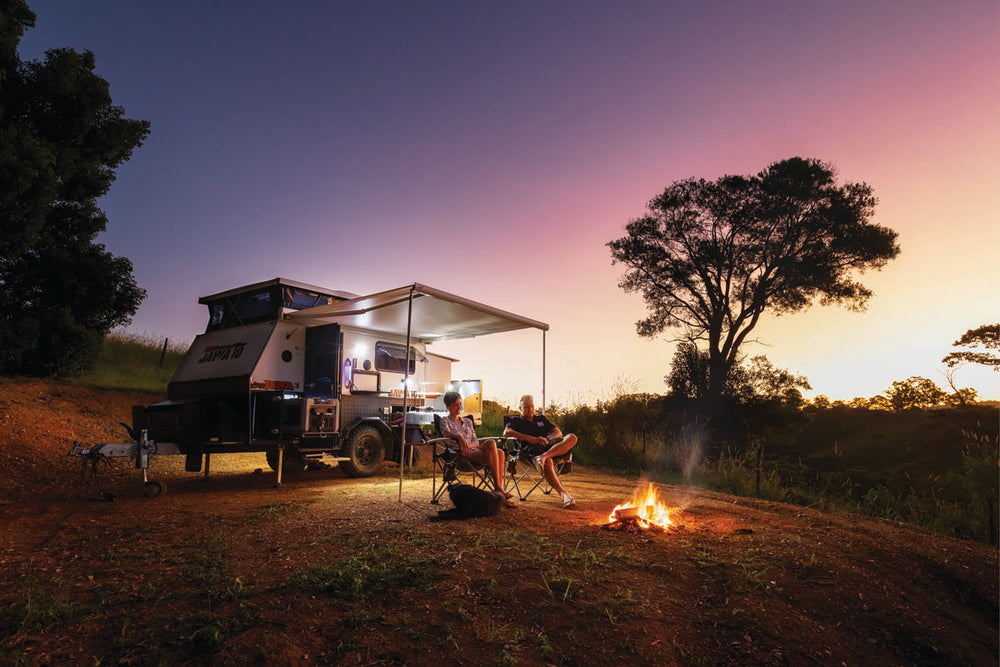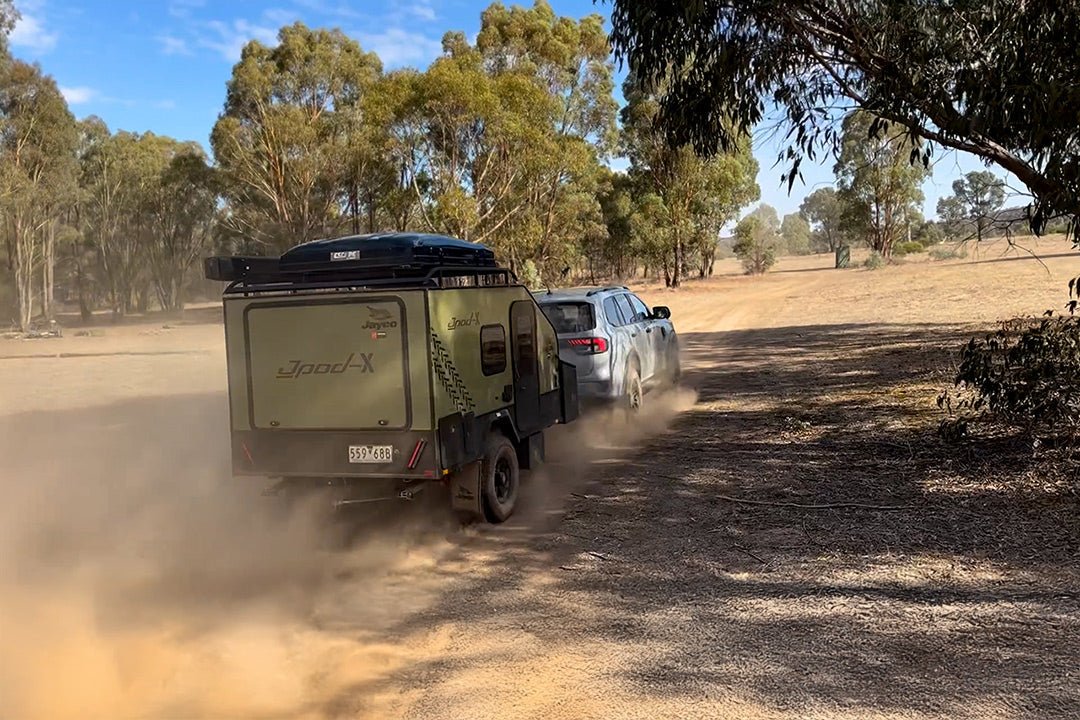Exploring Mutawintji

There are two surprising things about Wilcannia, apart from the fact it’s where Resch’s beer began. The first is that it’s home to a section of the Darling River known as Bondi Beach; the second is that we’ve found the red and yellow surf flags and are about to go in.
Mud squelches underfoot as we lower our kayaks into the coffee-coloured water, its rippled surface reflecting the red gums like an impressionist painting. There is little sound, just occasional birdsong coming from the trees above, and the sluice of water around our bows. Thanks to good rain earlier in the year the Darling River has filled, breathing life back into the parched landscape and providing water to the town of Wilcannia.
We’ve set up camp at Warrawong on the Darling, a 690ha working farm 3km east of Wilcannia that offers powered caravan sites, modern cabins and secluded bush camping. It was during Happy Hour, as we sat around the communal fire enjoying complimentary nibbles (served daily at 4pm), that we first heard whispers about the property’s famous beach.
A mud map was passed around, with X marking the spot for Bondi Beach, Danny’s house, Pub Number 13 and Steamers Point. While a scattering of broken crockery and a small mound of bricks are the only physical remains, each relic is a reminder of a time when Wilcannia was Australia’s third largest inland port during the great riverboat era. The installation of flags at a muddy stretch of ‘beach’ is a playful nod to the wit and whimsy of the outback characters that call this region home.
It is only day three of our outback trip taking in Wilcannia, Mutawintji National Park and Broken Hill and I’m already getting used to these quirky surprises.
If you think underwear hanging in trees is novel, wait until you visit a rest stop where a fridge doubles as a bush library and a piano stands poised as if for a concert. Painted in lipstick-pink they look like props from The Adventures of Priscilla, Queen of the Desert.
While Warrawong on the Darling’s 12km of river frontage has enough to keep campers, anglers, and bushwalkers happy for days, the historic town itself is also worth a look.
THE BEER WE DRINK 'ROUND HERE
If you have even a passing interest in beer make sure you head to the Wilcannia Golf Club. It was here, in 1879, that German brothers Edmund and Richard Resch started Lion Brewery, producing their famous amber nectar Resch’s Draught — “the beer we drink around here”.
The front stonewall of the golf club is all that remains of the original building, a photo of which can be found inside. To learn more check out the Reschs Appreciation Society Facebook page. Just don’t mention whether Resch’s should have an apostrophe or not (it seems Draught uses the apostrophe on taps and coasters, but not on Pilsner bottles or cans).
For a dry twist on an historic hotel (Wilcannia once boasted 13 pubs) don’t miss the Queens Head Hotel, a 140-year-old pub-turned-gallery, where art, elders and community come together.
To get a good feel for the former port town pick up a copy of the ‘Welcome to Wilcannia’ walking trail, which outlines more than 20 sites of interest. From the Wilcannia Hospital, designed by Cyril Blacket and built in 1879, to the elegant Post and Telegraph Office, each building is of genuine historical interest.
Late afternoons, when the sun is low and lovely, is the perfect time for photographers to capture the honeyed glow of the sandstone buildings.
Some will tell you that Wilcannia is not worth a stop, but in recent years an active and passionate tourism association has been working hard to put their town back on the tourist map. Give it a go, you won’t be disappointed.
ON THE ROAD TO MUTAWINTJI NATIONAL PARK
Like all the best places, there’s more than one road to Mutawintji National Park, a 68,912ha national park 130km north-west of Broken Hill. With roads from Tibooburra in the state’s north, Broken Hill to the west and Menindee to the south, it is at once accessible yet remote.
Coming from Wilcannia it’s an adventurous add-on to a trip to White Cliffs or, as we decided, a delightful last-minute detour from Broken Hill.
CAMP LIFE
Homestead Creek campground inside Mutawintji National Park is about 2km from the unmanned visitor centre. With 50 large sites suitable for tent, trailer, caravan or campervan ($12/night, online bookings currently required) it’s not hard to find your dream location amid the flat, wide and picturesque grounds. Solar-heated showers, flushing toilets, free barbecues, firepits and picnic tables complete the picture. Bring your own firewood and drinking water but, since this is a national park, pets are not allowed.
Most of the marked walks start at the campground or the nearby Homestead Creek day use area.
SIMPLY GORGE-OUS
Mutawintji National Park is dominated by the Bynguano Range, a hulking rock formation with deep gorges, mysterious rockpools and river gum-lined creek beds, all painted in a dusty palette of ochre tones. Flushed green after the recent rains it’s easy to see why Mutawintji, which means ‘green grass and water holes’, was so named. Today the park is jointly managed by the NSW National Parks and Wildlife Service and Aboriginal owners through the Mutawintji Board of Management.
One of the best walks in the park is the Mutawintji Gorge walk, an easy three-hour return hike that ends at a large swimming hole hemmed by clay-coloured cliffs. Keep an eye out for the endangered yellow-footed rock wallaby. Surrounded by such magnificence it’s easy to see why the region was so culturally significant to the Malyankapa and Pandjikali people.
A CLEVER MAN
The land around Mutawintji National Park has been a special place to these Indigenous groups for thousands of years. Artwork, artifacts and oral stories tell of large gatherings between nations, where ceremonies were held, goods traded, and disputes settled. As one of Australia’s most culturally significant sites Mutawintji National Park deserves to be at the top of any traveller’s list.
The Thaaklatjika Mingkana trail is one of the easiest, yet most rewarding. A short, 800m return walk (wheelchair accessible) from the Homestead Creek day use area follows the edge of a crinkle-cut gorge into Thaaklatjika (Wright’s Cave). Within this rocky overhang you’ll find hand stencils, a Groonki mark, which is said to symbolise a spiritually significant area, and the most intriguing of all, a painting of a Yarra Stick. Constructed of human hair and emu feathers, the stick was used by Miikika the Clever Man to beat bad spirits out of the sick. Interpretive signs explain the details.
The cave also gives clues to the arrival of William Wright, manager at the time of Kinchega sheep and cattle station.
THE NOT-SO-WRIGHT STUFF
William Wright guided Burke and Wills from Menindee through the region during a section of the duo’s ill-fated 1860–61 expedition. Showing scant regard for the rock art he left his calling-card — a 19th century ‘I was here’ graffiti tag — painted directly over a Groonki mark.
His initials, WW, inscribed inside a triangle followed by a L1X (‘59), stand as a reminder of European ignorance and disrespect for a way of life that has existed for more than 60,000 years. A second LX11 (‘62) marks his return.
WALK THIS WAY
Several marked walking trails wind along sandy creek beds and into the ranges. The Homestead Gorge Walk (Class 3, 7.5km return) is an amalgamation of several other trails. Do as much or little as you want, depending on your fitness and the weather on the day. After the easy first section to Thaaklatjika you can branch onto the steep Rockholes Loop Walk (white markers) or continue following the red markers to Homestead Gorge and its lovely waterhole, which fills after rain.
Experienced bushwalkers can tackle the Bynguano Range Walk (Class 4, 7.5km return) by following the green markers from the Homestead Gorge Walk into the rugged ranges. This is a steep track and takes about five hours return.
Another challenging trail is the Western Ridge Walk (Class 4, 6km return), which starts at the Homestead Creek campground and leads to a high ridge with spectacular views over the Bynguano Range. While it’s tempting to come up for sunset, don’t forget a torch or headlamp for the walk out.
OLD COACH ROAD DRIVE
If you prefer four wheels to two legs the Old Coach Road Drive is an interesting 10km drive that follows a portion of the original Broken Hill to White Cliffs Coach Run. This road also leads to the Mutawintji Historic Site, a restricted area with 8000-year-old rock art that can only be accessed on a guided tour (at the time of writing these tours are on hold due to COVID-19).
Other attractions include ruins of the Rockholes Hotel that was built to accommodate passing trade between the two towns, as well as spectacular rock formations. The most famous is Split Rock, which can be reached by a 3km walking trail at the end of the 10km drive.
Allow lots of stops and starts for photo opportunities and to look out for red kangaroos, emu and shingleback lizards, three animals you are likely to see within the park.
On the final walk I try to etch the scene on my memory forever — the red cliffs plummeting into the ribbon of olive-green and the broad-brush strokes of the saltbush, stretching as far as the eye can see. When I spot a wedge-tailed eagle, my personal good luck charm, I make a vow to return to this ancient land that exerts a pull on all who venture here.
FAST FACTS
Access to Mutawintji National Park from Wilcannia is via White Cliffs (approximately 80km along the sealed Opal Miners Way) followed by 170km of unsealed road. Another alternative is to take the Barrier Highway for 110km towards Broken Hill and turn right at Waterbag Road just before Little Topar. Although it is a good dry weather road (approximately 70km) it closes regularly after rainfall. Mutawintji National Park also makes a decent day trip from Broken Hill via Silver City Highway and Mutawintji Road.
TOURS
- Tri State Safaris offers day tours out of Broken Hill tristate.com.au
- Mutawintji Heritage Tours offers Aboriginal guided tours of the Sacred Historic Site mutawintjiheritage.wordpress.com
WHEN TO VISIT
Although Mutawintji National Park is a year-round destination it is best visited in autumn, winter and spring when daytime temperatures are pleasant. Wet weather is the biggest threat as unsealed public roads are susceptible to closures. Check road conditions with NPWS and bring sufficient supplies for an extended stay. nationalparks.nsw.gov.au.
BOOK YOUR CAMPSITE
Warrawong on the Darling, Barrier Highway, Wilcannia. Ph: 1300 688 225.
Homestead Creek campground, Mutawintji National Park. Ph: (08) 8080 3200.
Broken Hill Outback Resort, Barrier Highway, Broken Hill. Ph: 1300 679 688.







